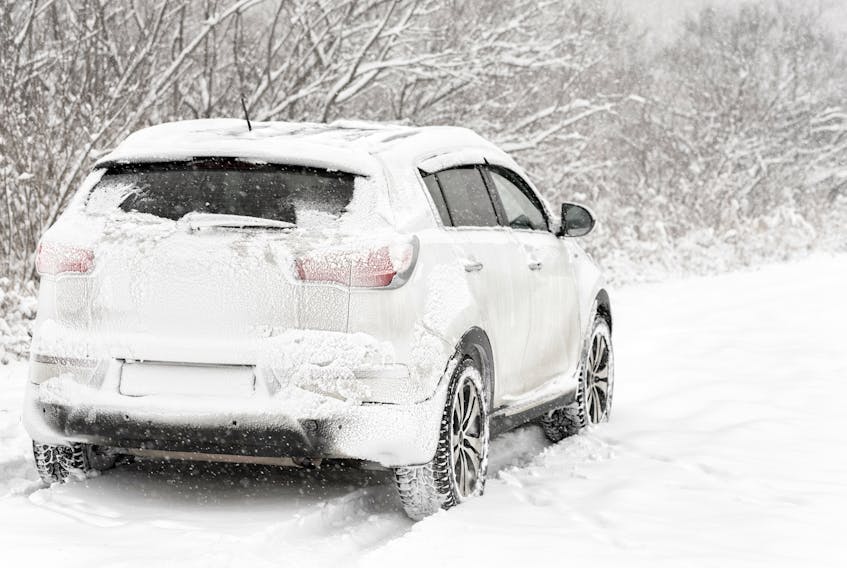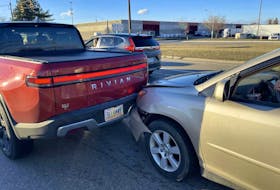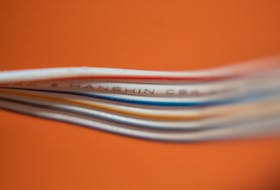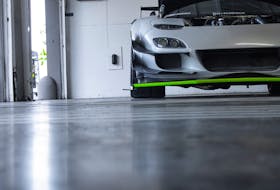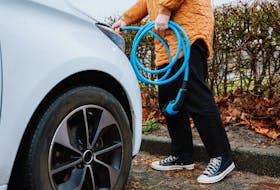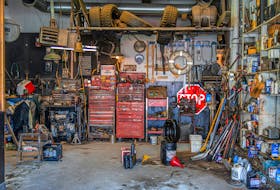Cost is the primary consideration for most consumers when buying new tires. Other factors include wear, and effectiveness in inclement conditions whether wet or winter. But what about comfort? The profile of a tire – the height of the sidewall, or the distance from rim to road - plays a major role in how a vehicle rides.
It is easy to get caught in a trap when buying winter or replacement tires. That trap was set by the designers of the vehicle. Automotive designers consider wheels the “jewelry” or “eye candy” on a vehicle. They work long and hard to come up with an attractive side profile. They can play with roof lines, window shapes and the slope or angle of the windshield and rear window. But they can’t get away from having a big round thing at each end, framed by the fender.
They know the center of those round things, the wheels, play a big role in the visual package. By altering the profile of the tire, they ensure the wheel presents a larger proportion of the visual. Less rubber, more eye-grabbing bling. <profile 1?)
As a result, tires for the average family vehicle, have grown from 14 or 15-inches in diameter to 18-20 inches. The overall height of the wheel and tire has not changed. But the amount of rubber you see has been reduced drastically while the size of the wheel has grown accordingly.
High-end sports or performance cars are equipped with rubber having minimal sidewalls and maximum width. Suspension engineers with driving dynamics as a priority want as little sidewall as possible to ensure the tread stays put during hard cornering. But, while big wheels and looks may be important, so is driving comfort. For the average consumer, a low-profile tire means a harsh ride, especially on worn secondary roads, damaged by frost and littered with potholes. For them a big sidewall and narrower tire is the way to go.
You can find extremes within a given vehicle. For example, the latest generation Toyota Corolla is available with three different wheel sizes. The low-end trim gets 15-inch steel wheels with plastic covers. Mid-level models come with 16-inch alloy wheels and top trim and sporty models get 18-inch alloys.
To ensure the overall height of the vehicle remains the same, the width and profile of the tires changes, from 195/65/15, through 204/55/16 to 225/40/18. I use the Corolla as an example. The same situation exists throughout the industry. The best -selling Ford Escape crossover comes with 17-20 inch wheels depending on trim level.
The first number indicates the width of the tread in mm. The last tells us the diameter of the wheel. But it is the middle number to consider when shopping for new or winter tires. That middle number tells the proportion of height to width. The 65 indicates that this tire size's sidewall height (from rim to tread) is 65% of its width. The measurement is also referred to as the tire's series, profile or aspect ratio. The higher the number, the taller the sidewall; the lower the number, the lower the sidewall.
Generally speaking, a taller sidewall provides an extra level of shock absorption, a cushion if you like. Here is yet another case of getting what you pay for. As prices rise the sophistication of the suspension escalates as well. At the low end, there will be little or no difference in suspension settings or tuning between the 15 and 18-inch wheel/tire combo. But a $100,000 vehicle’s suspension might automatically adjust the ride and handling depending on wheel/ire size.
I drive dozens of different vehicles each year, and have done so since Minis rolled on 10-inch wheels and 13-inches was common. Wheel sizes have climbed, and sidewalls have all but disappeared. My usual test route involves dozens of kilometers of divided 100-series highway and an equal amount of secondary roads, many of which are poorly maintain.
The smaller the sidewall, the more punishing the ride. Last week I drove a $160,000 Porsche on some nasty Nova Scotia backroads and was amazed at how the suspension coped with the poor surface quality. A few days earlier, I had driven a $25,000 compact car on 40-series tires over a similar road and was tossed around like a ping pong ball.
A lower profile tire may look better, and for the very few among us who can tell the difference, might provide slightly more grip under extreme cornering conditions. But, and I am generalizing here, the average consumer, driving an average vehicle, should consider the profile when shopping for tires.
A taller sidewall will not only ensure a better ride, it is the preferred choice in winter where the slightly narrower tread can cut through the snow or slush, down to the surface of the road.

